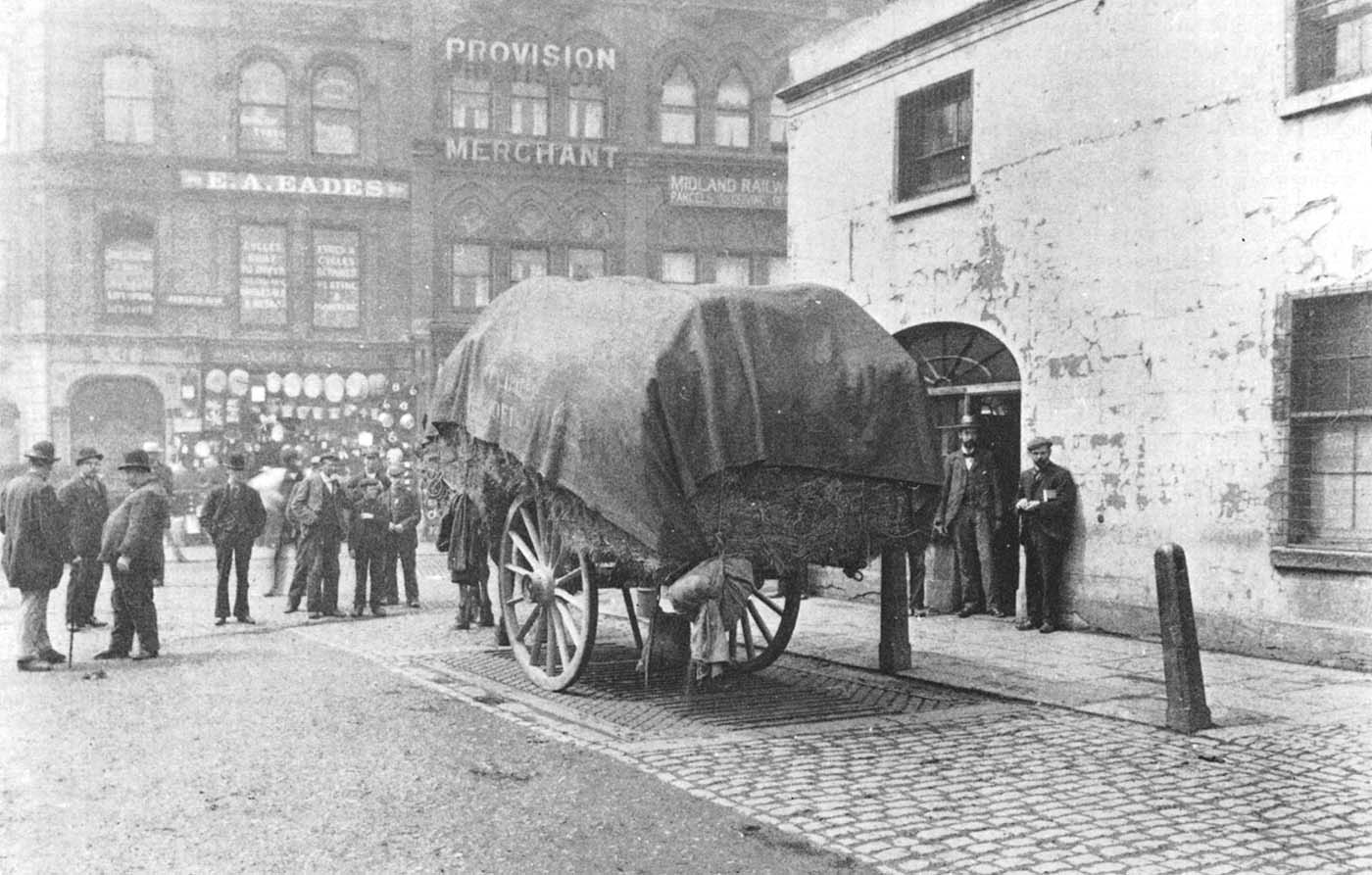|
|
 |
 |
|
London North Western
Railway:

Midland
Railway:

Stratford
Midland Junction Railway
|

|
LMS Route: Rugby to Wolverhampton
LMS Route: Birmingham New Street to Lichfield
LMS Route: Birmingham New Street to Soho and Perry
Barr
Curzon Street Good Station: lnwrcs2160
 |
A cart load of hay being weighed at Smithfield Market prior
to being sold at the open-air corn and fodder markets in 1903. Through the
services of Curzon Street, and its Great Western and Midland Railway
equivalents, came much of the goods sold on the streets of Britain and which
fed a growing economy. The expansion of trade could not have been possible
without railways as they made mass transportation of people and goods possible.
All types of fresh food could be transported which opened up new markets as
well as feeding numbers in towns and cities otherwise impossible. Richard
Foster writes, 'On the right, at No 67, are the premises of Griffiths &
Company, wholesale stationers , who from 1902 advertised themselves as Midland
Railway Company's Parcel Receiving Office (as can just be seen on the
building). Next door at No 69 is Peter Ambrose Debney, provision merchant. His
premises opened here in 1896 and closed about 1908. Edwin Albert Eades at No 71
was a hardware dealer and his shop front is crowded with zinc bowls, buckets
and other goods. The writing on the windows above offers cycles for sale by
retail or wholesale as well as a comprehensive service of repairs, spare parts
and tyres, and even offers to build cycles to order. The business was taken
over by Clement & Troon in 1904. On the left is the London, City and
Midland Bank'.
 back back

|
|
|
